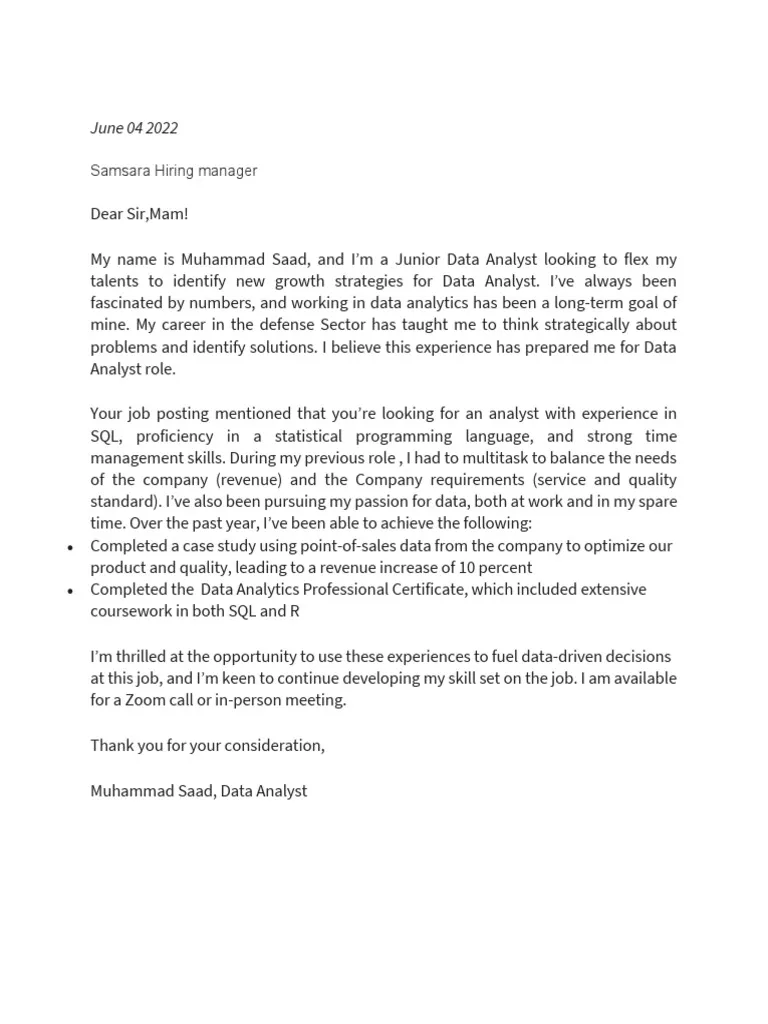Cover Letter for Data Analyst Internship Why It Matters
A cover letter for a data analyst internship is your first opportunity to make a strong impression on potential employers. While your resume provides a snapshot of your skills and experience, the cover letter allows you to showcase your personality, enthusiasm, and genuine interest in the role and the company. It’s a chance to tell your story, explain why you’re the perfect fit, and highlight how your skills align with the specific requirements of the internship. A well-crafted cover letter can significantly increase your chances of landing an interview, setting you apart from other applicants, and demonstrating your communication skills, which are vital in the field of data analysis. So, it is crucial to invest time and effort into creating a compelling cover letter.
Highlighting Your Skills & Experience
The core of your cover letter should revolve around highlighting the skills and experiences most relevant to the data analyst internship. Start by carefully reviewing the job description and identifying the key requirements. Then, select the skills and experiences that best match those requirements. This may include technical skills like SQL, Python, R, or data visualization tools such as Tableau or Power BI. It should also involve showcasing any projects where you’ve applied these skills or have hands-on experience with real-world data analysis. This section is your opportunity to provide specific examples of your previous work, explaining the challenges you faced, the actions you took, and the results you achieved. By connecting your abilities and experiences with the internship’s needs, you create a strong case for your candidacy.
Data Analysis Skills to Showcase
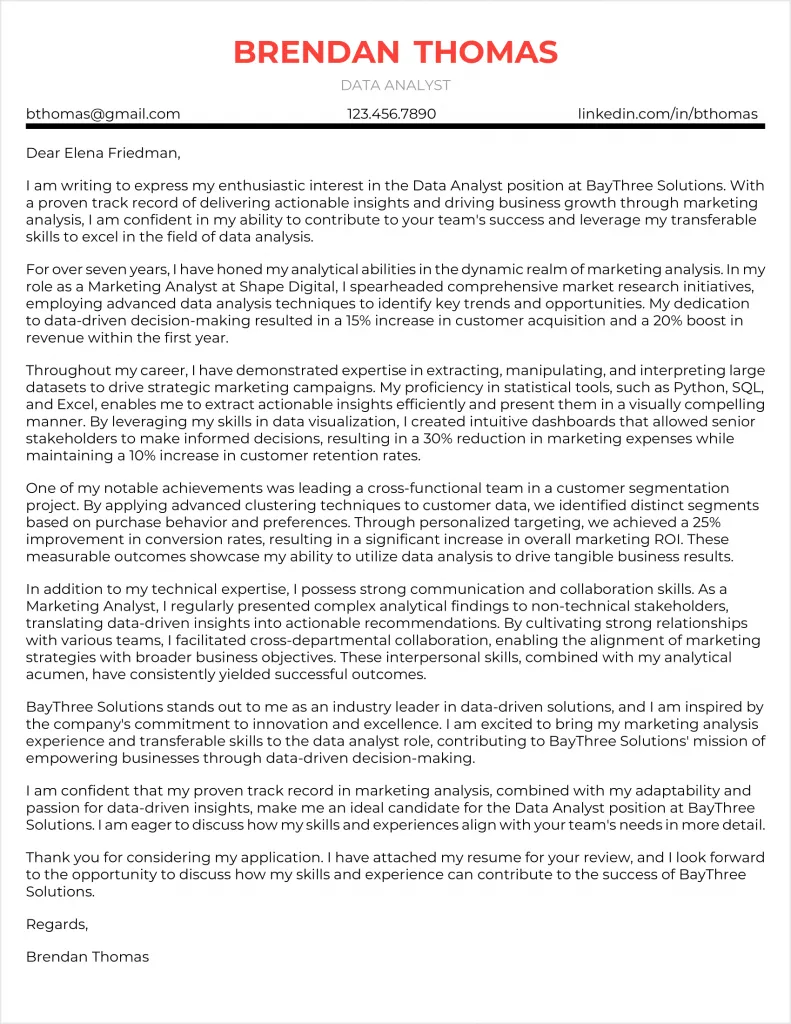
When highlighting your data analysis skills, focus on the most relevant to the internship role. Consider including your experience with statistical analysis, data modeling, data mining, and machine learning, if applicable. Provide specific examples of how you’ve used these skills in past projects or coursework. If you have experience with data cleaning and preprocessing, be sure to mention that, as this is a critical aspect of data analysis. Quantify your achievements whenever possible, such as by stating how you improved the accuracy of a model or the efficiency of a data processing pipeline. Showcasing your ability to analyze complex data sets and extract meaningful insights is crucial. Furthermore, demonstrate your understanding of data visualization techniques and how you effectively communicate findings through charts, graphs, and reports, which is a key aspect of the internship.
Technical Skills for Data Analysts
Data analyst internships often require a strong foundation in technical skills. Be sure to emphasize your proficiency with relevant tools and technologies. List specific programming languages like Python, R, or SQL, highlighting any projects where you’ve used them. Showcase your experience with data visualization tools like Tableau, Power BI, or Excel. Mention any experience with database management systems (DBMS), such as MySQL or PostgreSQL. Furthermore, highlight your familiarity with data warehousing and ETL (Extract, Transform, Load) processes if you possess that knowledge. Tailor these technical skills to the specific requirements mentioned in the job description to make your application stand out, ensuring you match the employer’s needs.
Soft Skills for Data Analysts
While technical skills are essential, don’t overlook the importance of soft skills. Data analysis is a collaborative field, so employers value strong communication, teamwork, and problem-solving abilities. Demonstrate your communication skills by explaining your ability to present complex data insights clearly and concisely to both technical and non-technical audiences. Highlight your teamwork experience, such as any group projects or collaborations, and emphasize your ability to work effectively with others. Additionally, showcase your problem-solving skills by describing how you approach challenges, such as your critical thinking abilities. Soft skills are what make you a well-rounded candidate, allowing you to fit well into a team and company culture.
Quantifiable Achievements to Include
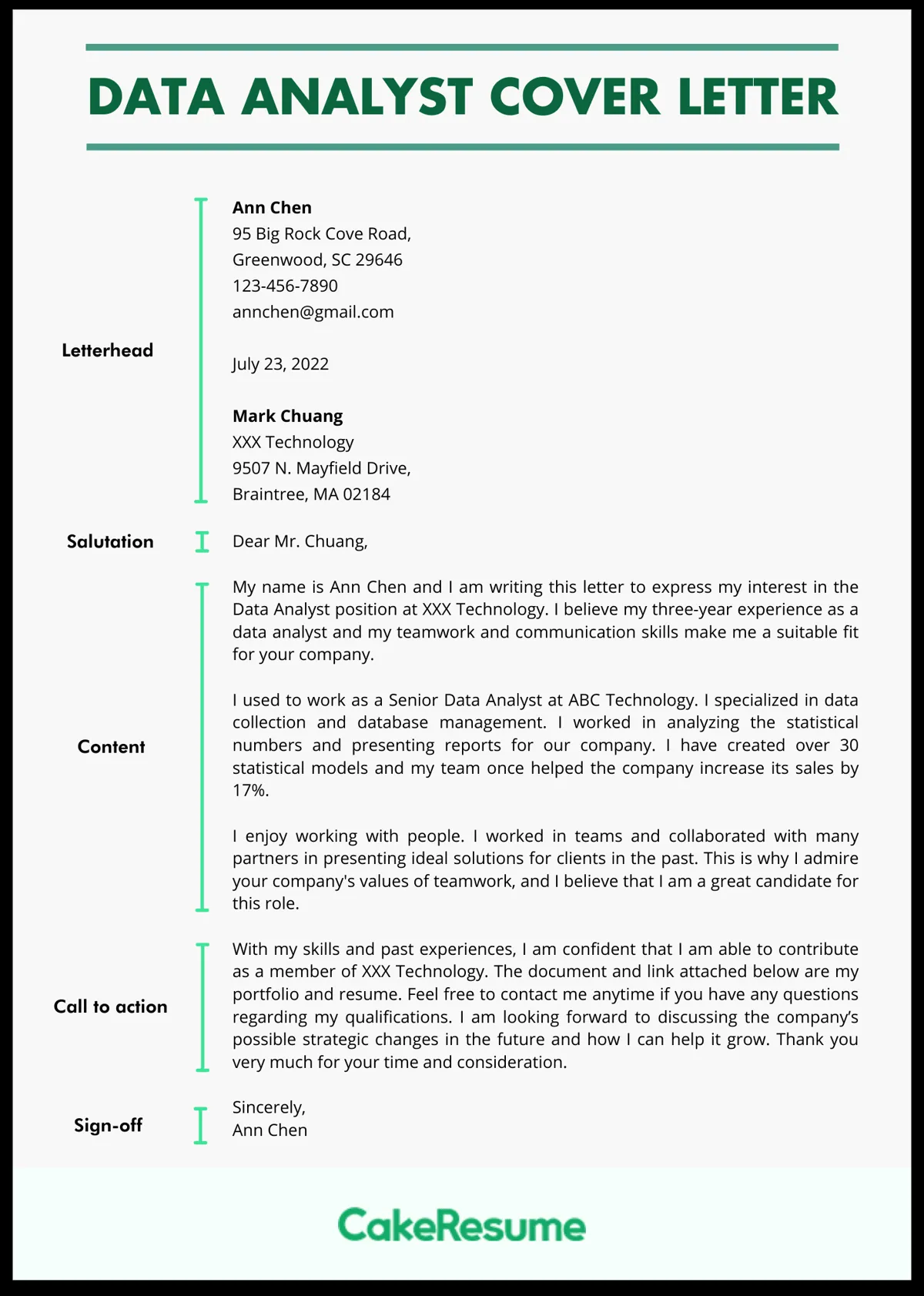
One of the best ways to make your cover letter stand out is by quantifying your achievements. Whenever possible, provide specific numbers and data to illustrate the impact of your work. For example, instead of saying “Improved data accuracy,” say “Improved data accuracy by 15% through implementing a new validation process.” If you completed a project, mention the results, such as “Developed a predictive model that improved sales forecasting accuracy by 10%.” Use metrics and figures to highlight your contributions and demonstrate the value you brought to your previous roles or projects. Quantifiable achievements offer concrete evidence of your abilities and provide a compelling narrative that can make a lasting impression on the hiring manager. Always consider using numbers to show off your skills, if possible.
Formatting Your Cover Letter for Impact
The formatting of your cover letter is just as important as its content. A well-formatted cover letter is easy to read, professional, and visually appealing. Use a clear and professional font, such as Arial or Times New Roman, with a font size of 11 or 12 points. Maintain consistent spacing throughout the document. Break up large blocks of text with paragraphs and bullet points to improve readability. Ensure your cover letter is concise and easy to scan, typically not exceeding one page. Make sure you use appropriate headings to break up the letter, so a hiring manager can easily read your information.
Cover Letter Structure
A well-structured cover letter follows a standard format that includes an introduction, body, and conclusion. Start with a professional greeting, such as “Dear [Hiring Manager name],” or “Dear [Company name] Hiring Team,” if you don’t know the name. In the introduction, state the position you’re applying for and how you learned about it. The body should highlight your skills, experiences, and how they align with the job requirements. Include specific examples and quantify your achievements. In the conclusion, reiterate your interest in the internship, thank the reader for their time, and include a call to action, such as requesting an interview. Following this structure ensures that your key information is presented logically and professionally.
Cover Letter Tone and Style
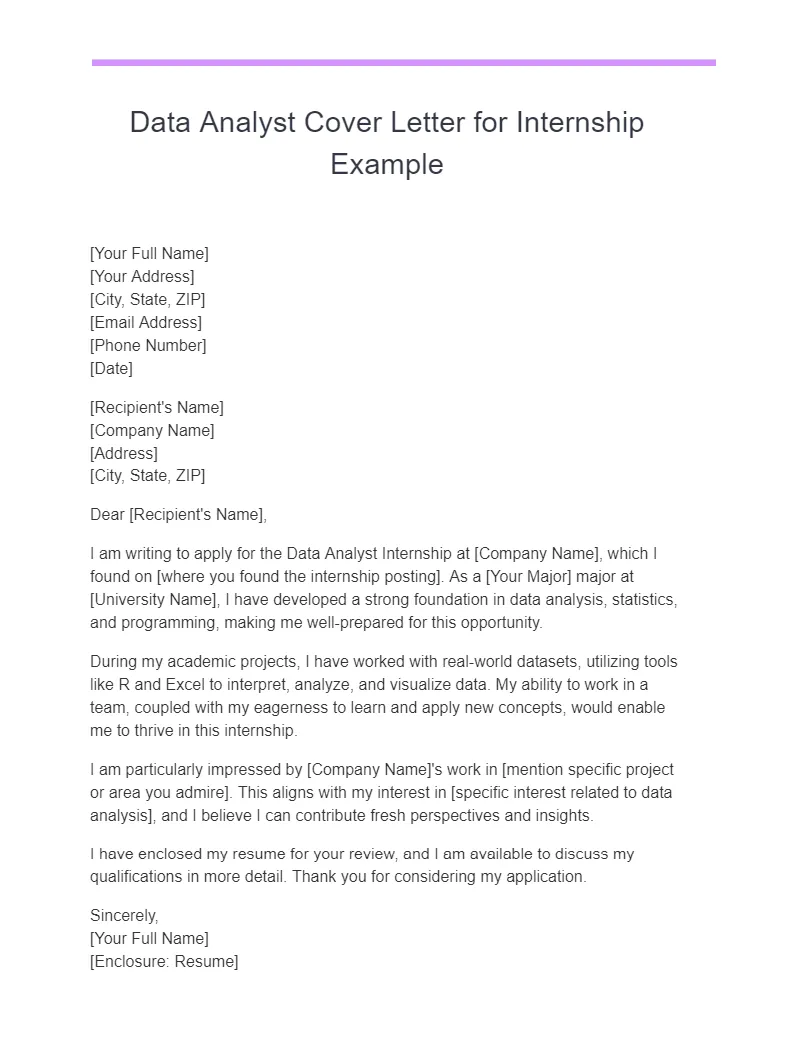
The tone and style of your cover letter should be professional, enthusiastic, and tailored to the company and role. Use a formal tone, but avoid sounding overly stiff. Show your personality and genuine interest in the opportunity. Use action verbs to describe your skills and accomplishments, and avoid passive language. Be specific, and provide concrete examples to support your claims. Proofread carefully to eliminate any grammatical errors or typos. Your cover letter should reflect your strong communication skills and make a positive impression on the reader.
Customization for Specific Internships
One of the most important aspects of a winning cover letter is customization. Never send a generic cover letter. Instead, tailor each letter to the specific internship and company. Research the company, understand its values, and align your letter with its mission. Review the job description carefully and identify the key skills and requirements. Highlight the skills and experiences that match those requirements. Show how your values align with the company’s culture. By customizing your cover letter, you demonstrate your genuine interest and make a stronger case for your candidacy. This attention to detail will make you stand out from other candidates.
Researching the Company
Before writing your cover letter, research the company. Visit their website, review their social media profiles, and read any recent news or press releases. Understand their mission, values, and culture. Identify the specific projects or areas of data analysis they focus on. This research will help you tailor your cover letter and demonstrate your interest in the company. In your cover letter, mention specific aspects of the company that appeal to you and explain how your skills and interests align with their goals. This shows that you’ve taken the time to learn about the company and are genuinely interested in joining their team.
Tailoring Your Letter
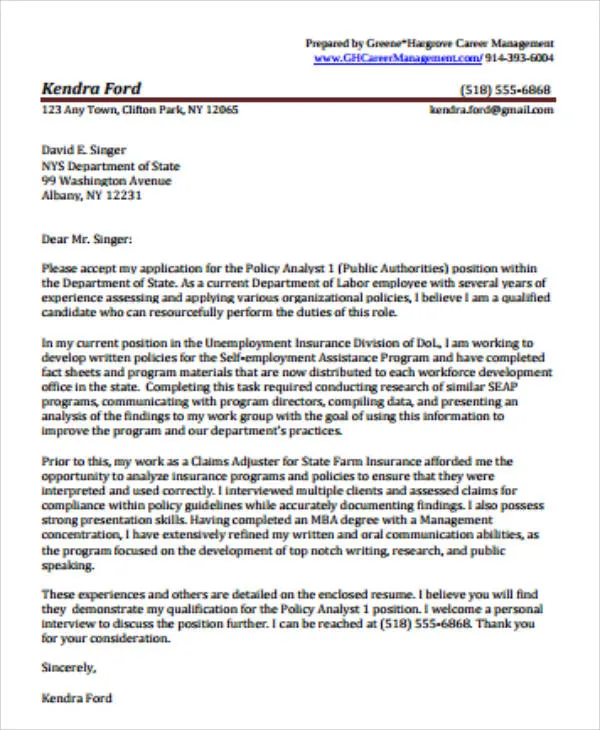
Once you’ve researched the company, tailor your cover letter to the specific internship and the company’s needs. Use keywords from the job description to demonstrate that you understand the requirements of the role. Highlight the skills and experiences that are most relevant to the position. Customize your letter to show how your skills and interests align with the company’s goals and values. In the body of your letter, provide specific examples of how you’ve used your skills in the past. This tailored approach will demonstrate that you understand what the company is looking for and that you’re a great fit for the internship.
Proofreading and Editing
Proofreading and editing are critical steps in the cover letter writing process. Before you submit your cover letter, carefully review it for any grammatical errors, typos, or inconsistencies. Ensure that your writing is clear, concise, and easy to understand. Ask a friend, family member, or career advisor to review your letter for feedback. Proofreading and editing demonstrate your attention to detail and professionalism. A polished cover letter can make a strong impression on potential employers, so don’t skip this important step.
Key Action Verbs to Use
Using strong action verbs can make your cover letter more compelling and engaging. Action verbs describe your accomplishments and demonstrate your skills effectively. Some examples of strong action verbs for data analyst cover letters include “analyzed,” “developed,” “implemented,” “optimized,” “visualized,” “interpreted,” “modeled,” and “transformed.” These verbs provide a clear picture of your abilities and the value you bring to the table. Using action verbs can make your achievements stand out and help the reader quickly understand your contributions.
Demonstrating Your Enthusiasm
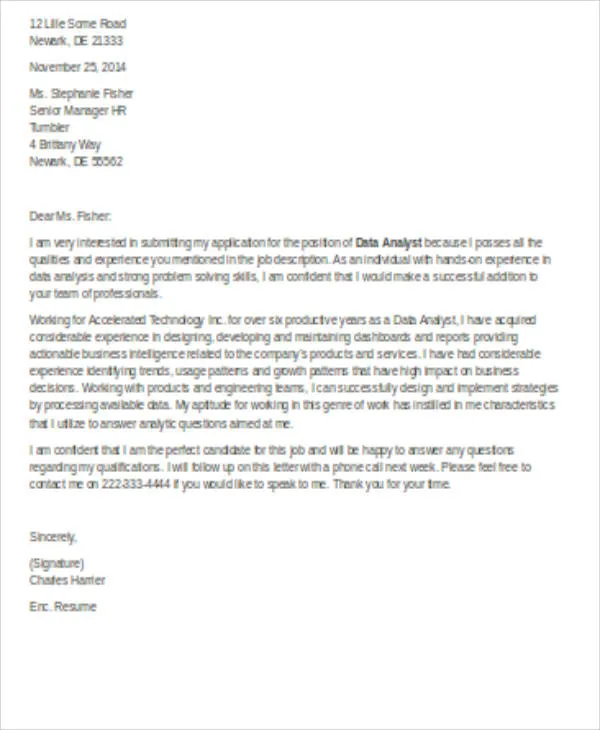
Demonstrating enthusiasm is critical for making a positive impression on potential employers. Your cover letter should convey your genuine interest in the internship and the company. Express your passion for data analysis and explain why you’re excited about the opportunity. Mention specific aspects of the internship or the company that appeal to you. Show that you’ve taken the time to research the company and understand its goals. Your enthusiasm will show through your writing and help you connect with the hiring manager. It can set you apart from other candidates who may seem less passionate.
Call to Action Requesting an Interview
In your cover letter’s conclusion, include a clear call to action to encourage the reader to take the next step. This could be requesting an interview or expressing your interest in discussing your qualifications further. Clearly state your availability for an interview and thank the reader for their time and consideration. A call to action shows your confidence and initiative and helps you move forward in the hiring process. Make it easy for the hiring manager to contact you by including your phone number and email address in your contact information.
